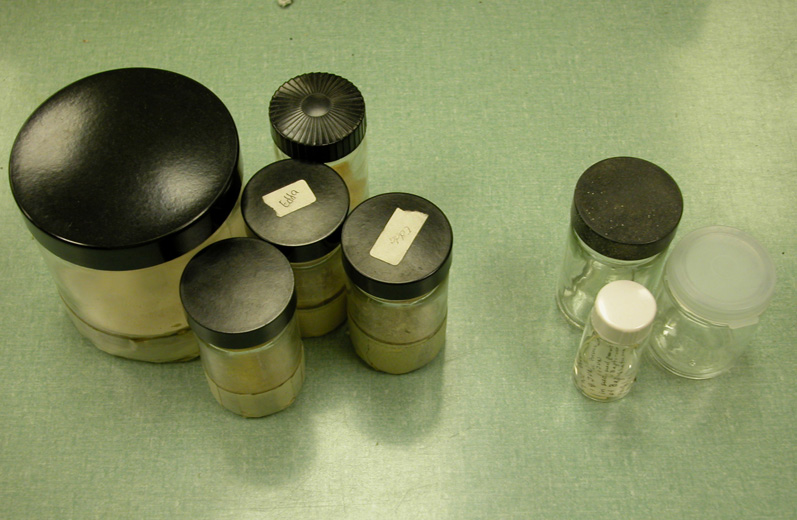Collecting JarsAuthor: Joe A. MacGown |
Collecting jars are simply any jar that has some sort of killing agent in them. We use various sized jars with two different types of killing agents, ethyl acetate and potassium cyanide. Ethyl acetate jars have a layer of plaster of paris at the bottom approximately 1/2 to 1 inch thick. Ethyl acetate is poured into the jar until it saturates the plaster. A folded kimwipe is place into the jar to help separate insects. I have seen others use jars with small wood chips soaked in ethyl acetate and I am sure there are many more variations of this. I primarily use ethyl acetate for killing beetles. The cyanide jars have a thin layer of dry potassium cyanide at the base of the jar (about a 1/4 inch thick), followed by a layer of sawdust (about 1/2 inch thick), and topped off with a layer of plaster (1/2 inch thick) which is poured wet over the sawdust. The jars are placed under a vented fume hood with the lids off until the plaster thoroughly dries (usually a couple of days or so). After the plaster is dry, the base of each jar is taped with either masking tape or strapping tape. This is done in case the jar breaks, the glass and cyanide will be contained. The cyanide is activated by adding a couple of pinches of water to the dried plaster, which then soaks through to the cyanide below releasing deadly fumes. Cyanide is a very dangerous chemical that can be fatal if ingested and I would not recommend this for children. However, because it kills insects very fast, it is quite useful. Typically, I use cyanide jars for killing wasps, bees, flies, moths, and many other winged insects. Some people, especially individuals not associated with museums, may use other killing agents, such as acetone, soaked into paper towel, no pest strip, or others similar chemicals. Immature insects. Immature stages of many insects, soft bodied insects (such as camel crickets, some flies, etc.), millipedes, centipedes, spiders, ants, and many others are collected in various concentrations of ethyl alcohol (rubbing alcohol can also be used and is readily available at department stores). |
 |
A few collecting jars. Jars on the left are cyanide jars with plaster and sawdust layers and tape on the outside surrounding the bases of the jars. The jars on the right are used for alcohol collections. |


